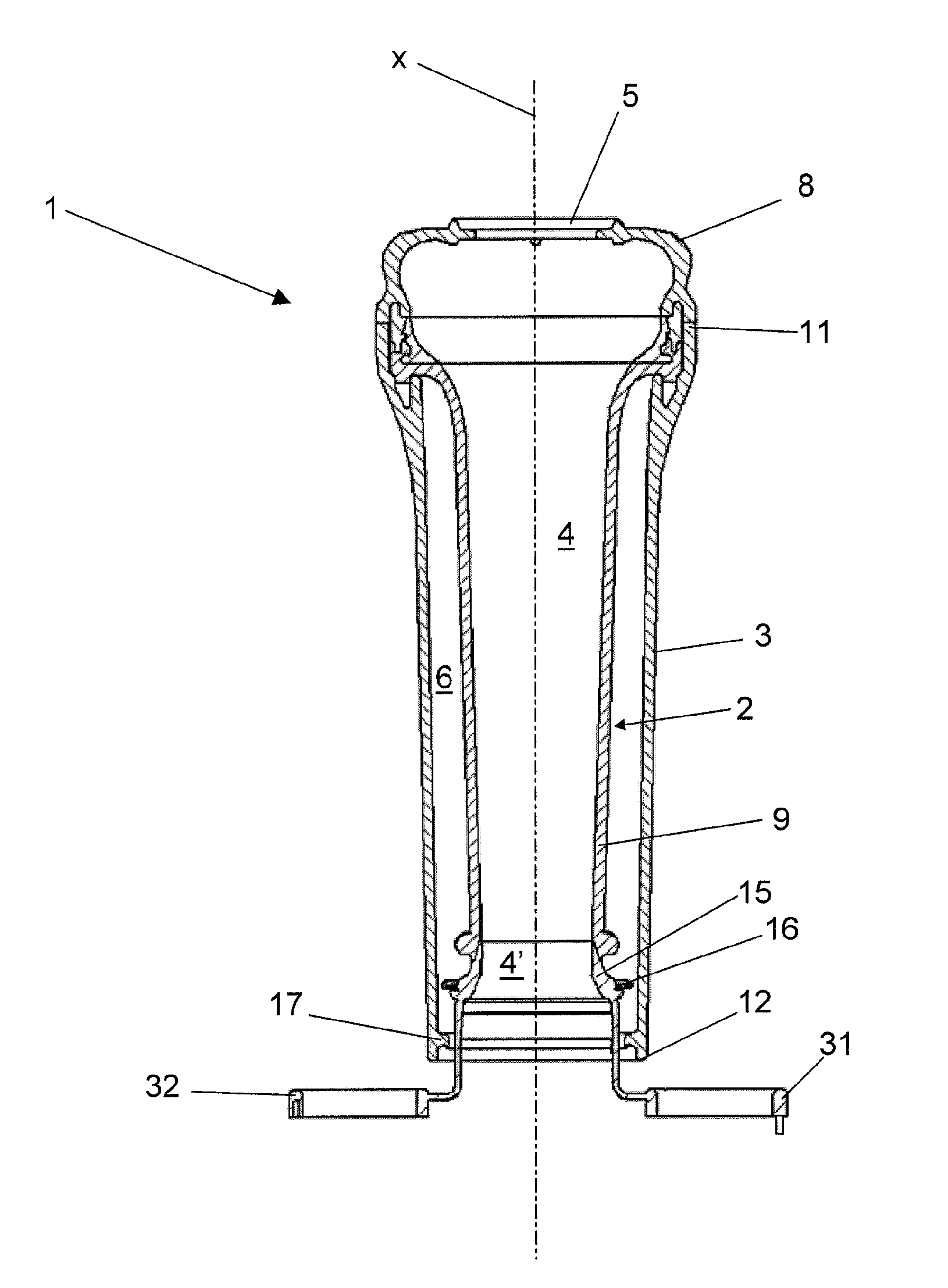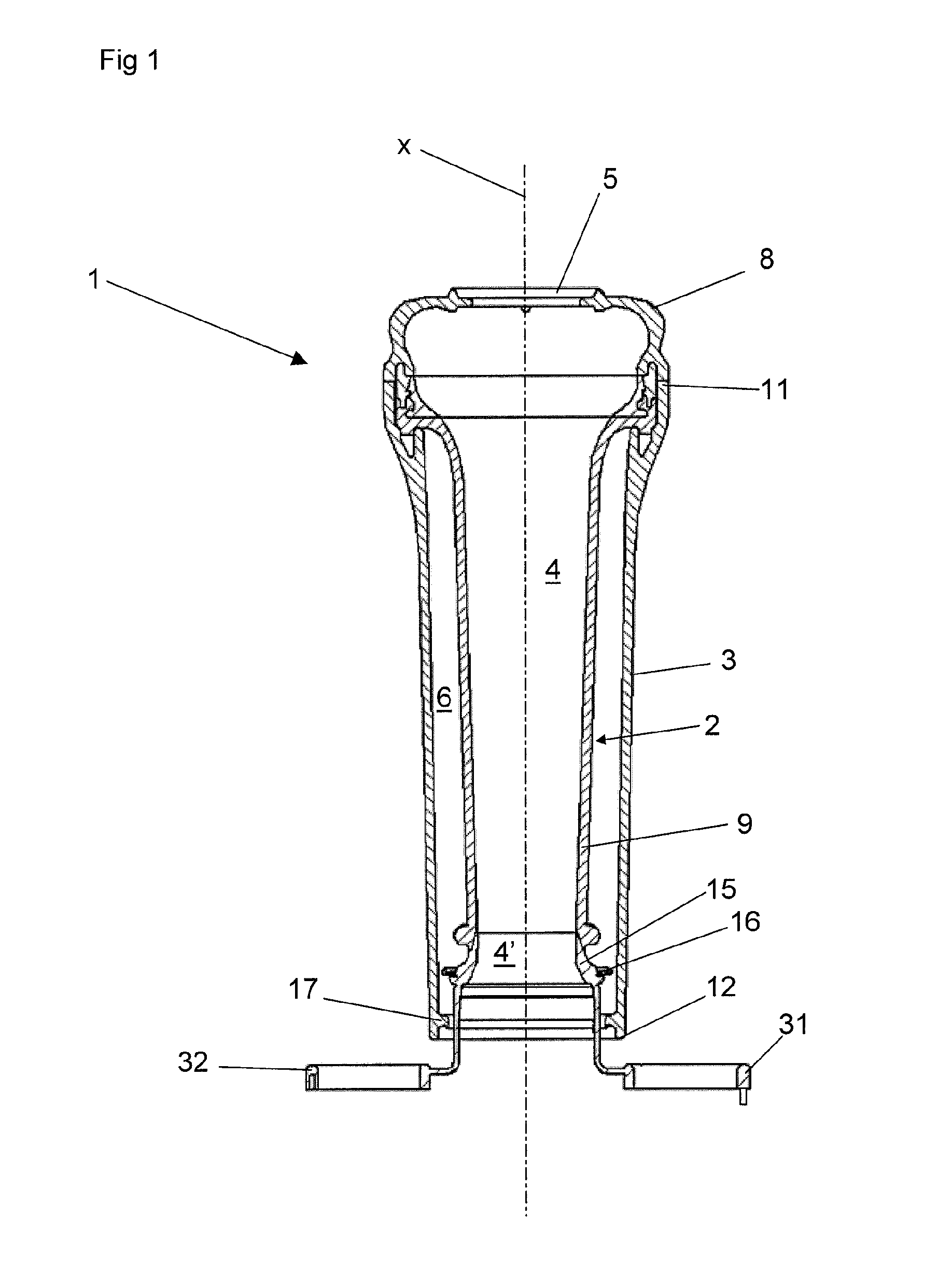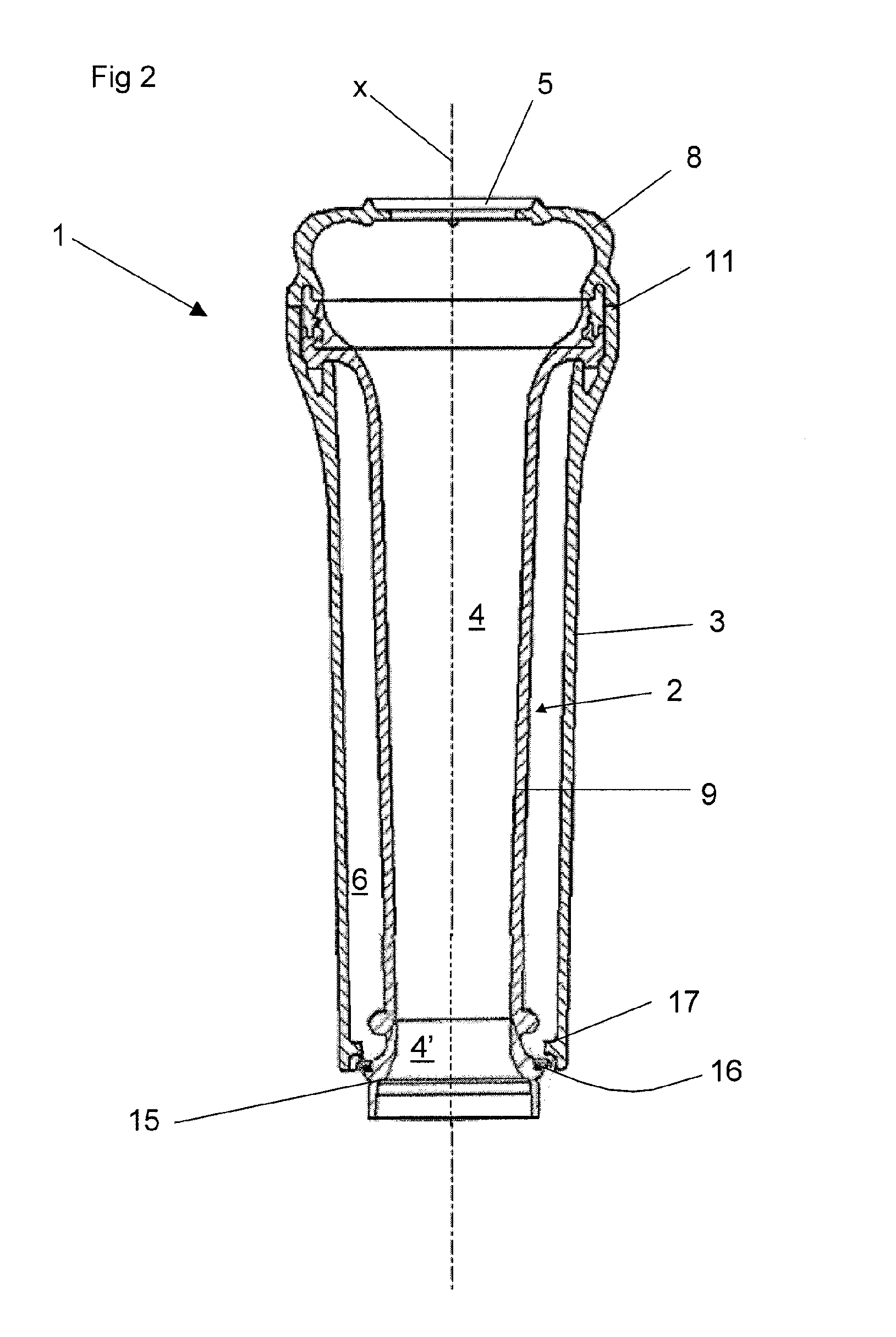Teatcup liner
- Summary
- Abstract
- Description
- Claims
- Application Information
AI Technical Summary
Benefits of technology
Problems solved by technology
Method used
Image
Examples
Embodiment Construction
[0031]FIGS. 1 and 2 discloses a teatcup 1 comprising a teatcup liner 2 and a shell. FIG. 1 discloses the teatcup liner 2 introduced into the shell but not finally engaged therein. FIG. 2 discloses a mounted state, in which the teatcup liner 2 is engaged in the shell 3. The teatcup liner 2 includes an inner space 4 adapted to receive a teat of an animal to be milked. The teatcup liner 2 and the inner space 4 extends along a longitudinal centre axis x. A teat of an animal is introduced into the inner space 4 via an upper opening 5. A pulsation chamber 6 is formed between the shell 3 and the teatcup liner 2. The pulsation chamber 6 is accessible via an aperture, e.g. formed by a pipe nipple (not disclosed). In the mounted stated, the teatcup liner 2 comprises an upper head portion 8 and a lower tubular barrel portion 9 of the teatcup liner 2. The shell 3 has an upper end 11 and a lower end 12.
[0032]The head portion 8 and the tubular barrel portion 9 may be separate engaged parts. When ...
PUM
 Login to View More
Login to View More Abstract
Description
Claims
Application Information
 Login to View More
Login to View More - R&D
- Intellectual Property
- Life Sciences
- Materials
- Tech Scout
- Unparalleled Data Quality
- Higher Quality Content
- 60% Fewer Hallucinations
Browse by: Latest US Patents, China's latest patents, Technical Efficacy Thesaurus, Application Domain, Technology Topic, Popular Technical Reports.
© 2025 PatSnap. All rights reserved.Legal|Privacy policy|Modern Slavery Act Transparency Statement|Sitemap|About US| Contact US: help@patsnap.com



